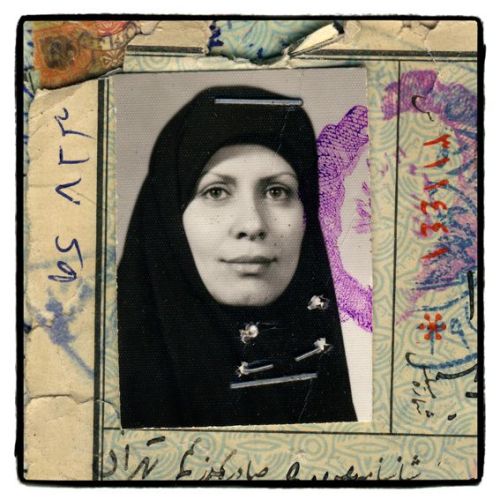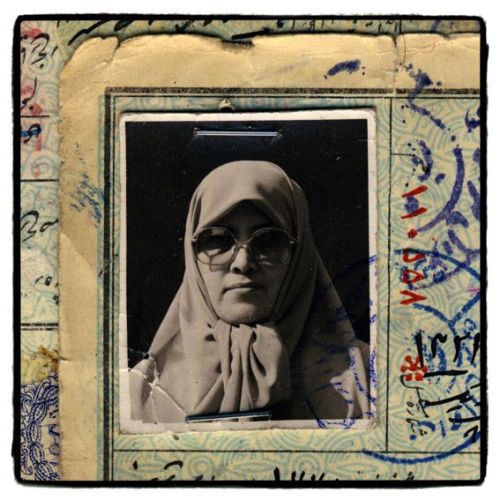Najaf Shokri: Daughters of IranIn the autumn of 2005, Najaf Shokri was on his way to work when he ma
Najaf Shokri: Daughters of IranIn the autumn of 2005, Najaf Shokri was on his way to work when he made an intriguing discovery in a rubbish bin near his house in downtown Tehran. The bin, outside a branch of the National Civil Registrations Organisation, was filled with old national identification documents, all issued in 1942 and long expired.Shokri decided to create an art project out of his find, a collection of ID photographs that documents a generation. Shokri called the project Irandokht - “daughter of Iran” - after he noticed so many women by that name among the documents. It used to be a common first name in Iran.Before their replacement with more modern ID cards, Iranian identification documents consisted of four-page birth certificates issued without photographs. A holder was required to add a photograph to the document before using it for various legal purposes such as marriage, the national university entrance examination (known as the concours), or voting. Though the documents Shokri found were issued in 1942, the images in Irandokht are largely drawn from the period between the late 1950s and the late 1970s, when most of the women pictured added their photographs to their IDs.Between 1950 and 1978, women’s roles in Iranian society transformed dramatically. The middle class rapidly expanded, and women from different backgrounds found their way into schools and the job market. Basic primary education, once the preserve of the economic elite, spread to much of the populace. Young women in Iran’s cities either removed their hijab or never wore it in the first place.“One can see the history of the era in these faces,” Shokri says. “Many of these women had mothers who were born to rural or small-town families but were married to men who came from the cities. The urban population was expanding and life was changing. It seems despite the fact that many of these families came from more traditional backgrounds they were in the process of adapting to the more westernised life of the big cities.”A popular term from the early 1920s through the early 1940s, during the country’s preceding surge of modernisation, Irandokht is now out of fashion both as concept and name. But that’s in part exactly why Shokri chose it for his project.“I wanted to transform expired private documents into public heritage,” he says. Irandokhts, the daughters of Iran, remind us of a past - in fact not so distant - when the Middle East had a different face. via theguardian -- source link
Tumblr Blog : 5centsapound.tumblr.com
#iran#najaf shokri#persian art#persian women









